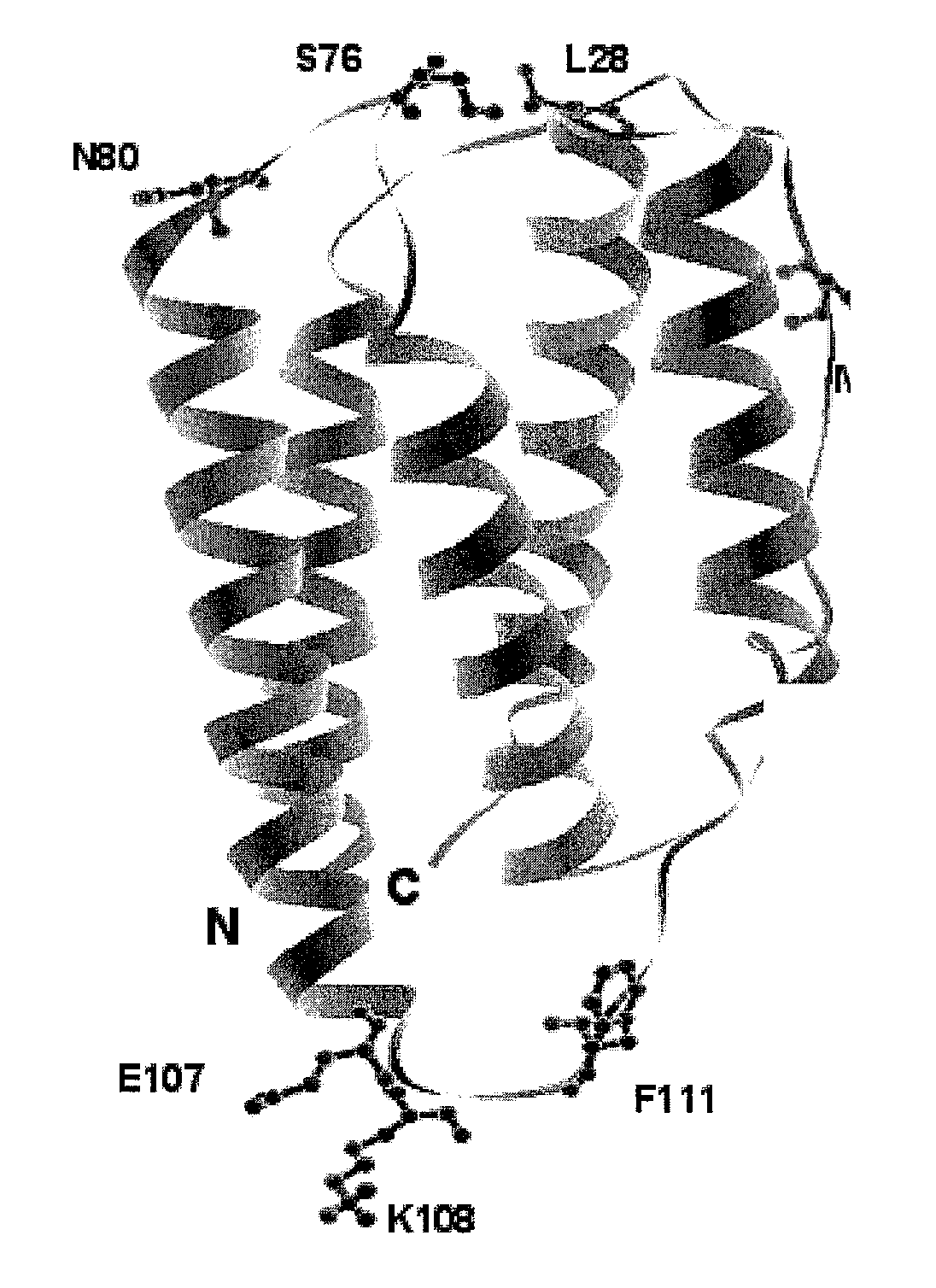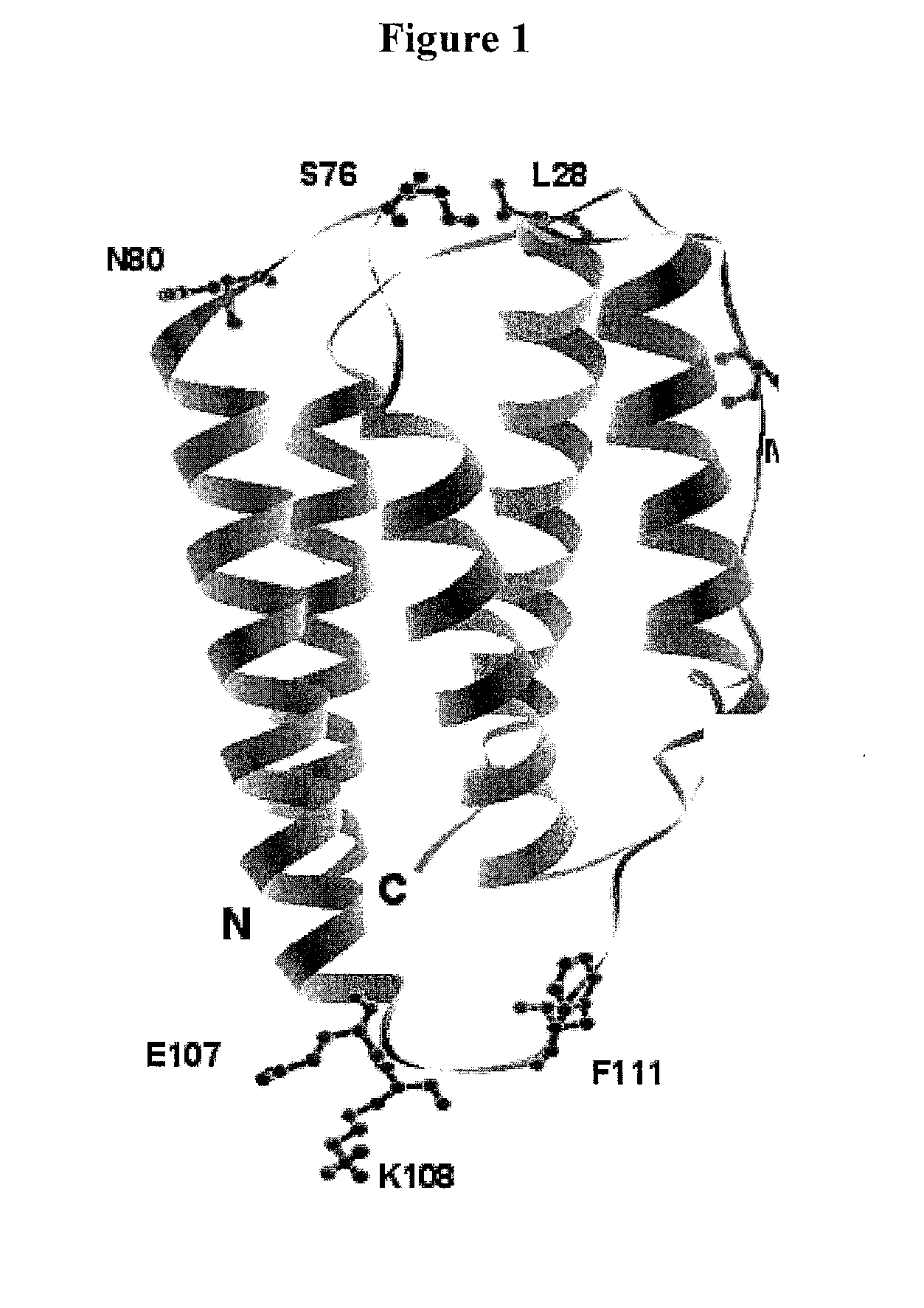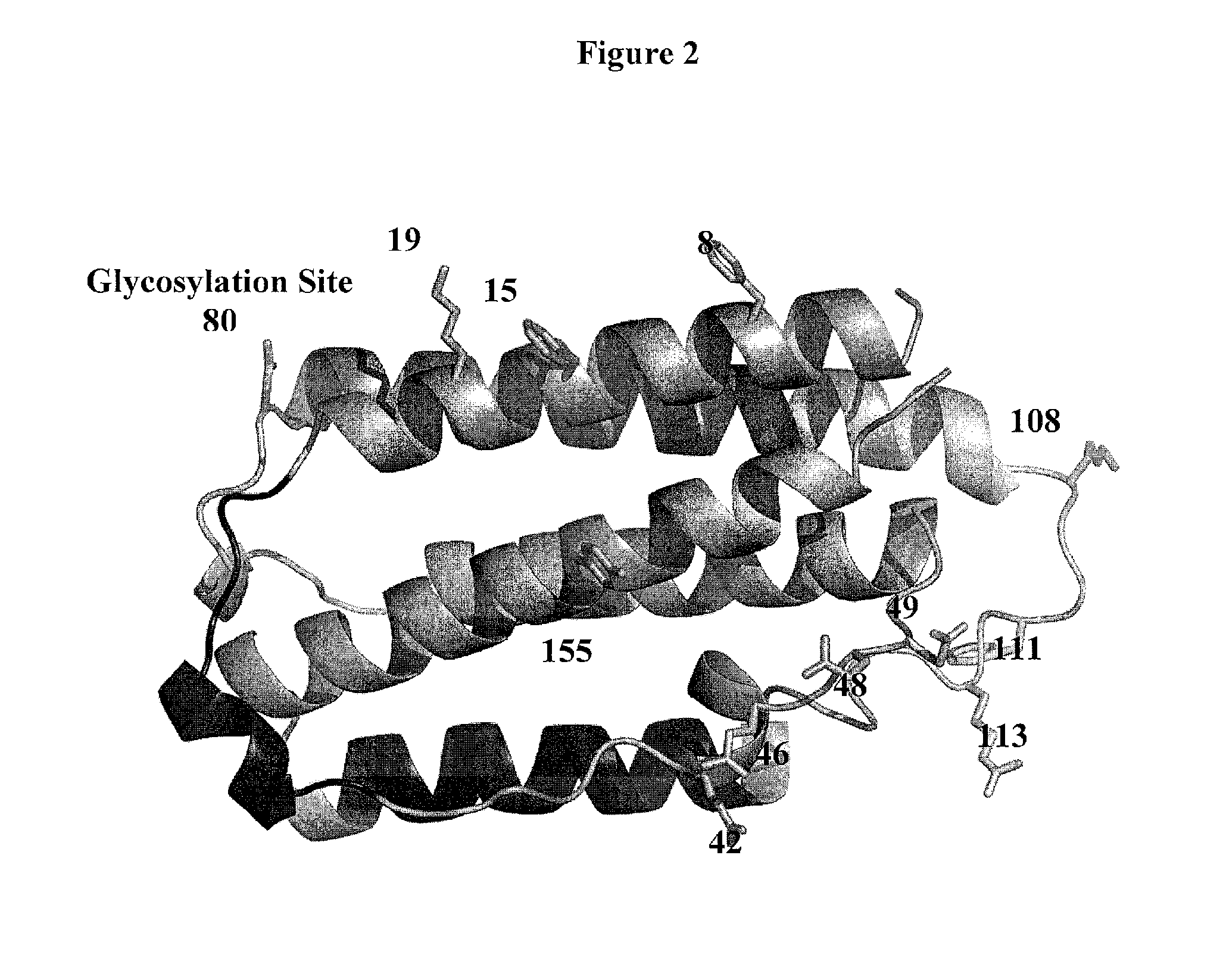Modified interferon beta polypeptides and their uses
a technology of interferon beta and polypeptides, which is applied in the field of interferon beta polypeptides, can solve the problems of short serum half-live, short serum half-live, and inability to optimally utilize natural type i interferon proteins for therapeutic use, and achieve the effect of increasing the therapeutic half-li
- Summary
- Abstract
- Description
- Claims
- Application Information
AI Technical Summary
Benefits of technology
Problems solved by technology
Method used
Image
Examples
example 1
[0682]This example describes some of the many potential sets of criteria for the selection of sites of incorporation of non-naturally encoded amino acids into IFN beta.
[0683]Based on analysis of the crystal structure with PDB ID 1AU1, seven sites were selected: 28, 36, 76, 80, 107, 108, and 111 for substitution with the non-naturally encoded amino acid p-acetylphenylalanine. See FIG. 1. Residue 80 (N80) is a glycosylation site. In some embodiments, one or more non-naturally encoded amino acids are incorporated at one or more of the following positions of IFN beta: 28, 36, 76, 80, 107, 108, 111, and any combination thereof of SEQ ID NO: 1 or the corresponding amino acids in SEQ ID NOs: 3, 4. In some embodiments, the non-naturally occurring amino acid at one or more of these positions is linked to a water soluble polymer, including but not limited to, positions: 28, 36, 76, 80, 107, 108, 111, and any combination thereof of SEQ ID NO: 1 or the corresponding amino acids in SEQ ID NOs: 3...
example 2
[0691]This example details cloning and expression of a IFN beta polypeptide including a non-naturally encoded amino acid in E. coli. This example also describes methods to assess the biological activity of modified IFN beta polypeptides.
[0692]Methods for cloning IFN beta are known to those of ordinary skill in the art. Polypeptide and polynucleotide sequences for IFN beta and cloning of IFN beta into host cells as well as purification of IFN beta are detailed in Goeddel et al., Nucleic Acids Res. 8, 4057 (1980), U.S. Pat. Nos. 7,144,574; 6,531,111; 4,966,843; 5,376,567; 5,795,779; 7,144,574; 4,462,940; 4,894,330; 4,518,584; 5,702,699; 6,962,978; 5,814,485; 6,887,462; 6,800,735; 6,514,729; and U.S. Publication Nos. US2002 / 0137895, U52004 / 0115169, and US2005 / 0054053, all of which are incorporated by reference in their entirety herein.
[0693]cDNA encoding IFN beta without a leader or signal sequence and with a C17S substitution is shown as SEQ ID NO: 2. Modifications to the wild-type IF...
example 3
[0715]This example details introduction of a carbonyl-containing amino acid and subsequent reaction with an aminooxy-containing PEG.
[0716]This Example demonstrates a method for the generation of a IFN beta polypeptide that incorporates a ketone-containing non-naturally encoded amino acid that is subsequently reacted with an aminooxy-containing PEG of approximately 5,000 MW. Each of the residues before position 1 (i.e. at the N-terminus), 1, 2, 3, 4, 5, 6, 7, 8, 9, 10, 11, 12, 13, 14, 15, 16, 17, 18, 19, 20, 21, 22, 23, 24, 25, 26, 27, 28, 29, 30, 31, 32, 33, 34, 35, 36, 37, 38, 39, 40, 41, 42, 43, 44, 45, 46, 47, 48, 49, 50, 51, 52, 53, 54, 55, 56, 57, 58, 59, 60, 61, 62, 63, 64, 65, 66, 67, 68, 69, 70, 71, 72, 73, 74, 75, 76, 77, 78, 79, 80, 81, 82, 83, 84, 85, 86, 87, 88, 89, 90, 91, 92, 93, 94, 95, 96, 97, 98, 99, 100, 101, 102, 103, 104, 105, 106, 107, 108, 109, 110, 111, 112, 113, 114, 115, 116, 117, 118, 119, 120, 121, 122, 123, 124, 125, 126, 127, 128, 129, 130, 131, 132, 133...
PUM
 Login to View More
Login to View More Abstract
Description
Claims
Application Information
 Login to View More
Login to View More - R&D
- Intellectual Property
- Life Sciences
- Materials
- Tech Scout
- Unparalleled Data Quality
- Higher Quality Content
- 60% Fewer Hallucinations
Browse by: Latest US Patents, China's latest patents, Technical Efficacy Thesaurus, Application Domain, Technology Topic, Popular Technical Reports.
© 2025 PatSnap. All rights reserved.Legal|Privacy policy|Modern Slavery Act Transparency Statement|Sitemap|About US| Contact US: help@patsnap.com



